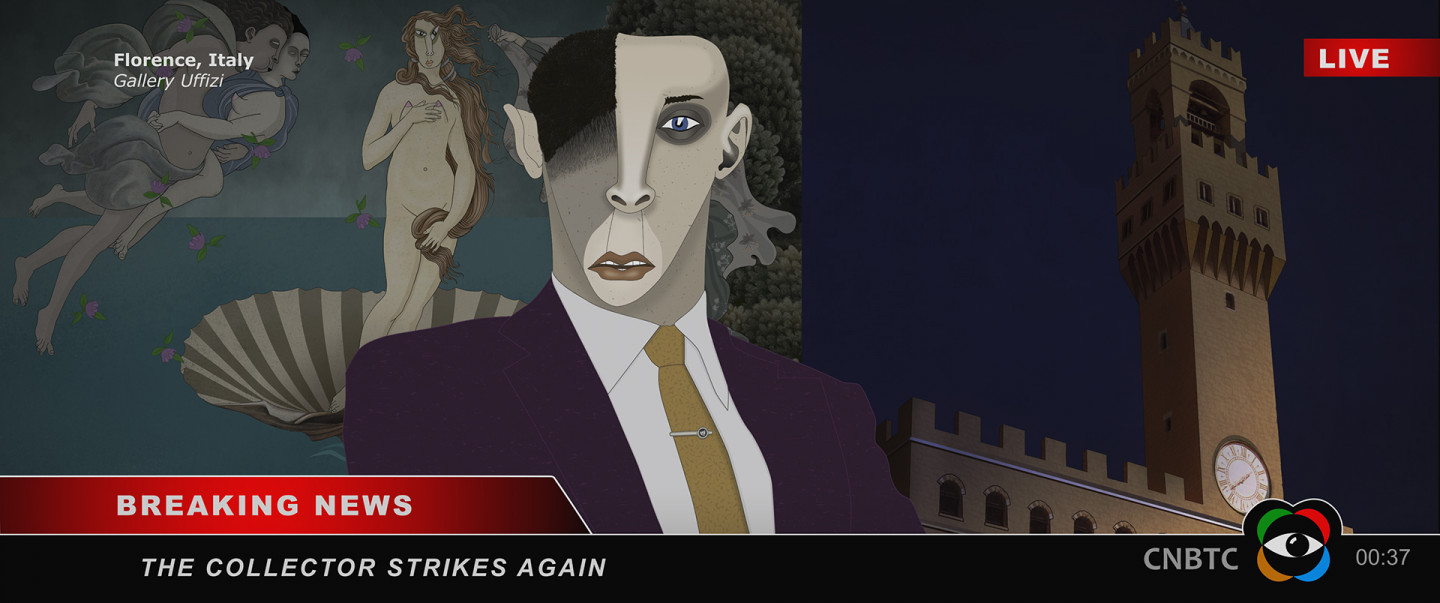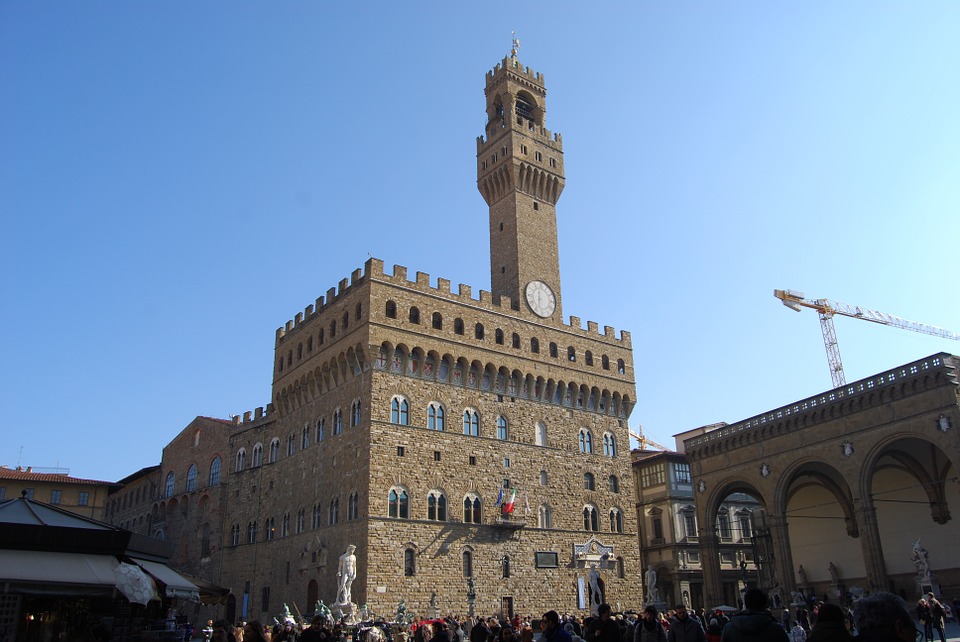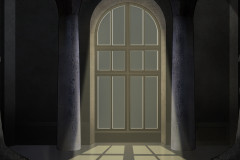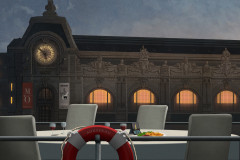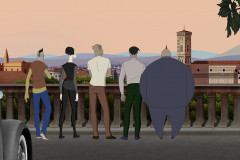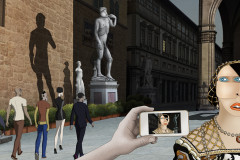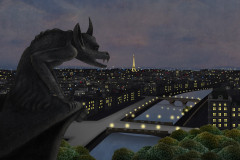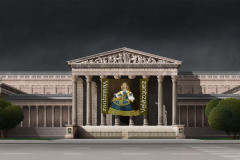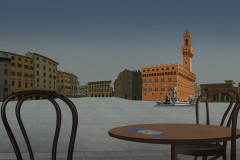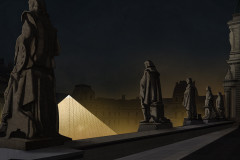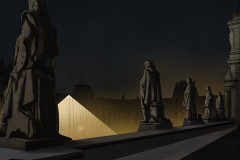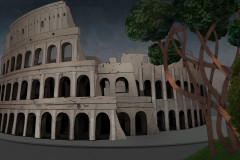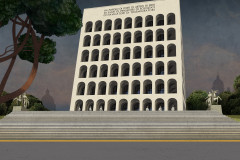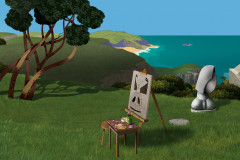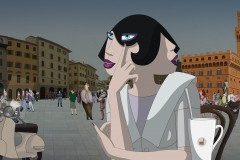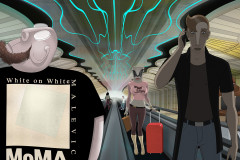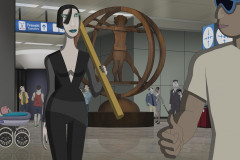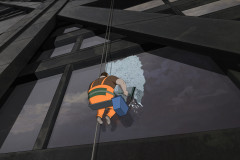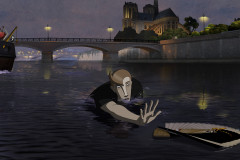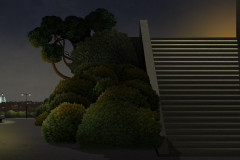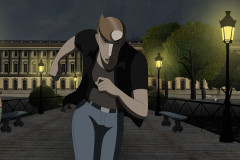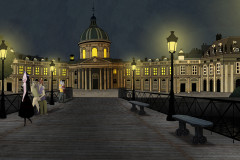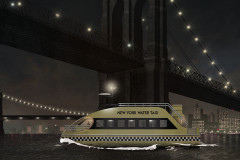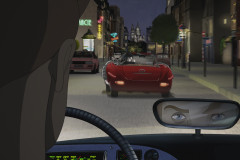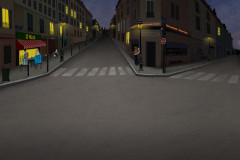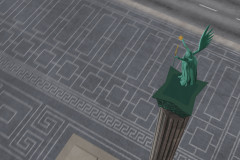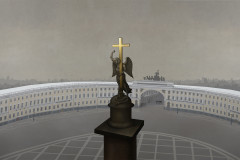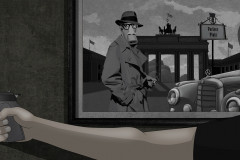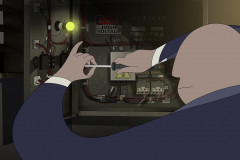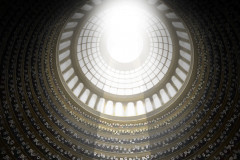A Palazzo Vecchio a toszkán nagyhercegek székhelye és egyben kormányzati palota volt. A Santa Maria del Fiore dómmal egy időben kezdték építeni ugyancsak Arnolfo di Cambio tervei szerint. Nevét („Régi palota”) akkor kapta, amikor a Medici-család nagyobb, újabb lakhelyre költözött (Pitti-palota). Hogy a nagyhercegeknek ne kelljen a zsúfolt és nem túl biztonságos belvárosi utcákon közlekedniük a hivatal és a lakhelyük között, Vasari 1565-ben folyosót tervezett a két épület között az Uffizi képtáron keresztül, az Arno folyó felett a Ponte Vecchio-n és a Santa Felicita-templomon át egészen a Pitti-palotáig. A korábban itt dolgozó mészárszékeket és henteseket elköltöztették a Ponte Vecchio-ról, hogy a Medicieknek ne kelljen bűzben sétálniuk. Azóta ékszerészek és aranyművesek dolgoznak itt – még manapság is.
A Palazzo bejáratát két hős, Michelangelo Dávidja és Bandinelli Herkulese őrzi. Igaz, ma már csak a másolataikat csodálhatjuk meg itt. A Palazzo Vecchio-ban volt Leonardo híres, ma már elveszett freskója, az Anghiari-csata is – ehhez készült tanulmányrajzot őriz a budapesti Szépművészeti Múzeum a mestertől. Másolatok (például Rubensé) alapján mégis képet kaphatunk a nagy polihisztor kompozíciójáról: néhány alakba sűrítve mutatja be a csata dinamikáját és érzelmeit.
A filmben a Palazzo Vecchio többször is feltűnik: híradóban, fotózkodó pár mögött vagy Kowalski és Marina firenzei beszélgetésekor a háttérben. A legszebb oldalát mégis akkor látjuk, amikor Ruben Brandt és csapata a Piazzale Michelangelo-ról tekint le a gyönyörű városra és a Régi Palotára.
The Palazzo Vecchio was the seat of the Grand Dukes of Tuscany and also served as the government palace. Construction began around the same time as the Florence Cathedral (Santa Maria del Fiore), based on designs by Arnolfo di Cambio. It earned the name “Old Palace” when the Medici family moved to a larger, newer residence—the Pitti Palace. To spare the Grand Dukes from navigating the crowded and not particularly safe city streets between their residence and the government offices, Vasari designed a corridor in 1565 connecting the two buildings. The passage runs through the Uffizi Gallery, over the Arno River via the Ponte Vecchio, across the Church of Santa Felicita, and ends at the Pitti Palace. Butchers and meat vendors were relocated from the Ponte Vecchio so the Medici would not have to endure the smell—since then, the bridge has been occupied by jewelers and goldsmiths, as it still is today.
The entrance to the Palazzo is guarded by two heroic figures: Michelangelo’s David and Bandinelli’s Hercules. Today, only their replicas stand in place. The Palazzo Vecchio was also once home to Leonardo da Vinci’s famous, now-lost fresco The Battle of Anghiari—a preparatory drawing for it is preserved in Budapest’s Museum of Fine Arts. Based on copies (such as Rubens’s), we can still imagine the composition: the intensity and emotion of battle condensed into a handful of figures.
The Palazzo Vecchio appears several times in the film: on the news, behind a couple taking photos, or in the background during a conversation between Kowalski and Marina in Florence. But its most beautiful appearance comes when Ruben Brandt and his team look out over the city from Piazzale Michelangelo, taking in the stunning view of Florence and the Old Palace.






